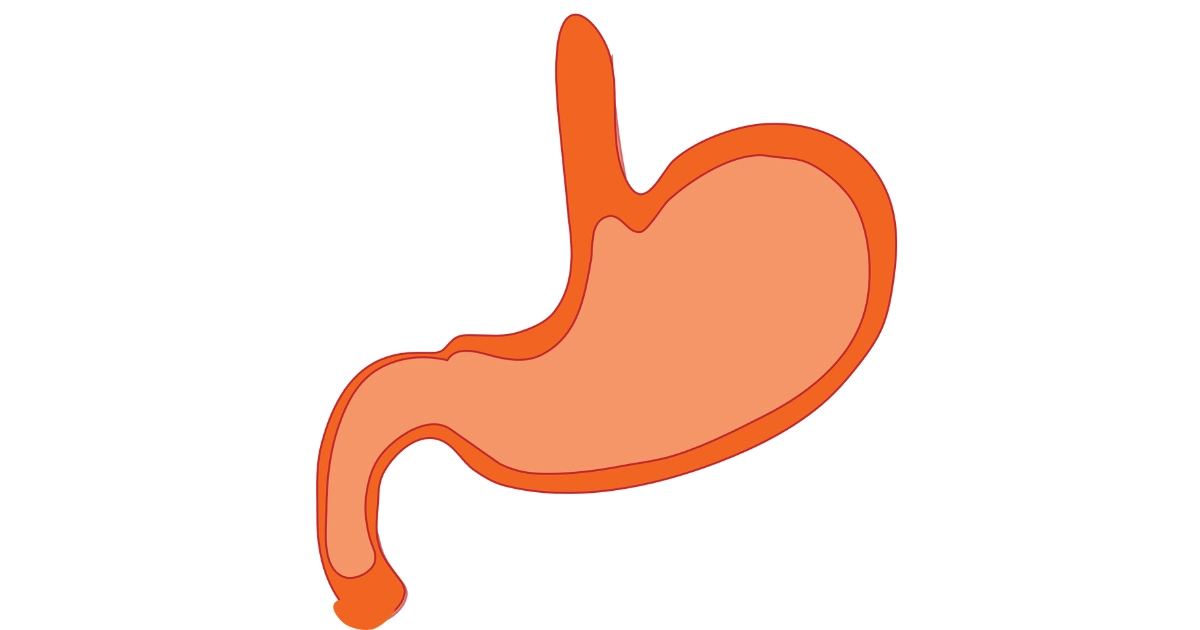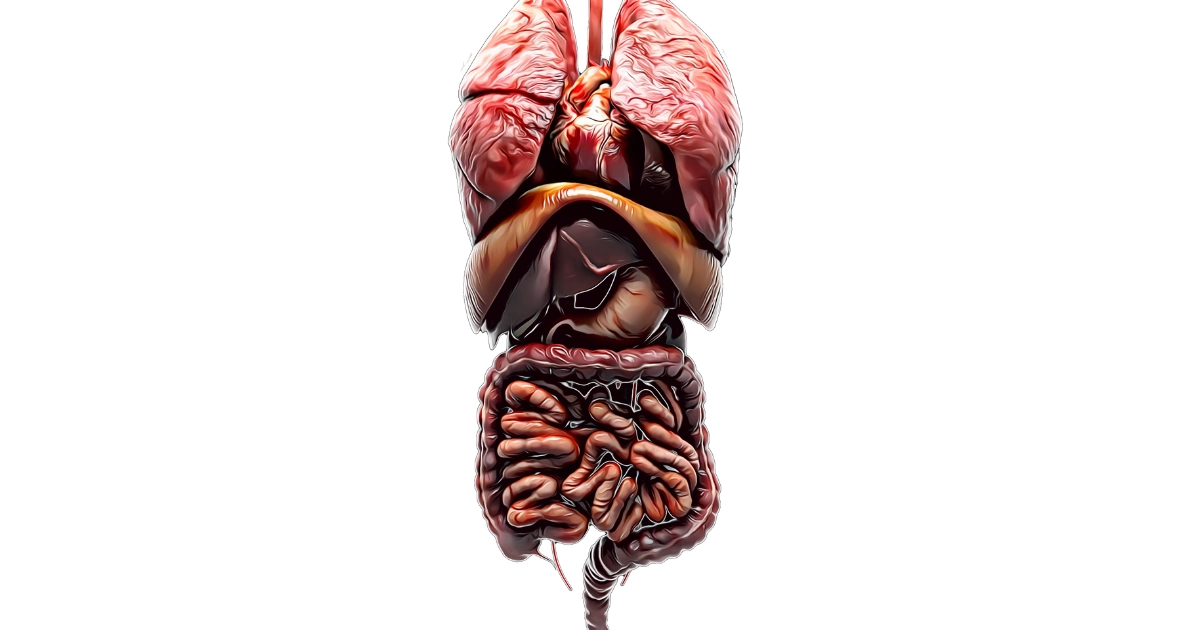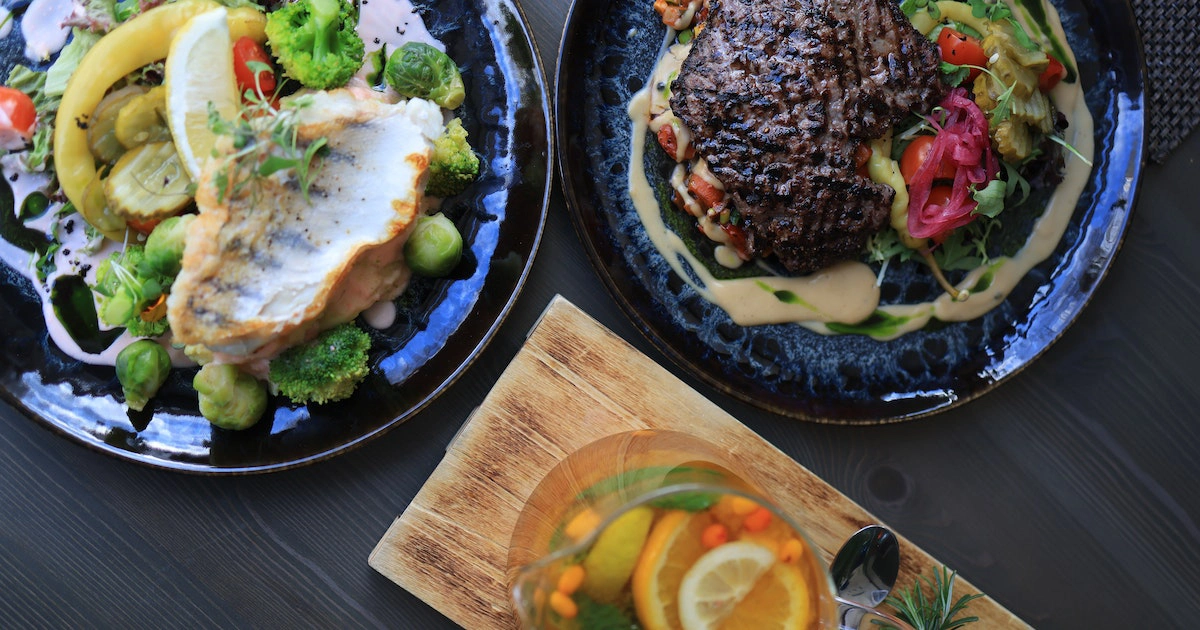Digestion is a complex process that occurs in our bodies every day. It involves breaking down food into smaller molecules so that our cells can absorb and utilize them for energy, cell development, and cell repair. But what exactly happens during digestion? Is it a physical or chemical change? These are questions that have puzzled scientists and curious individuals alike.
In this brief exploration, we will unravel the truth behind whether digesting food is a chemical change. Get ready for a dive into the fascinating world of digestion and discover the transformative processes that occur within your body every time you enjoy a meal.
Defining Chemical Changes
Chemical changes refer to the process by which a substance undergoes a chemical reaction, creating one or more new chemicals. During a chemical change, the composition and properties of the materials involve altered. Some common examples of chemical changes include rusting iron, burning wood, and digesting food.
Digestion is a complex biological process that involves breaking down large food molecules into tiny particles that can be ingested and used for energy and other bodily functions. This process of digestion is made up of a number of chemical reactions that happen in the stomach, small intestine, and other digestive organs.
During digestion, enzymes release to break down complex molecules such as carbohydrates, fats, and proteins into simpler ones such as glucose, fatty acids, and amino acids. These reactions involve the breaking and forming of chemical bonds between atoms and molecules in food substances. Therefore it concluded that digestion is indeed a chemical change.
What Happens During Digestion?
Digestion begins in the mouth, where teeth and enzymes begin to break down carbohydrates through a chemical reaction known as hydrolysis. The tongue and saliva also aid in mixing and swallowing food.
Once swallowed, the partially digested food travels down the oesophagus and into the stomach. Here, gastric juices containing acid and enzymes continue to break down proteins while muscles churn and mix everything into a thick liquid called chyme.
Next, chyme enters the small intestine, receiving the enzymes from pancreas and bile from the liver to further break down carbohydrates, fats, and proteins. Nutrients absorb into the bloodstream through tiny finger-like projections called villi lining the walls of the small intestine.
Digestion involves both mechanical (chewing) and chemical (enzymatic reactions) processes that convert complex foods into simpler molecules that can be readily used by our bodies. Therefore, digesting food is considered a chemical change.
The Role Of Enzymes
Enzymes play a crucial role in the chemical process of digesting food. Digestion is indeed a chemical change, and enzymes are responsible for catalyzing the reactions that break down food into smaller molecules. In fact, enzymes are proteins that act as biological catalysts.
For example, the enzyme amylase breaks down carbohydrates into simple sugars like glucose and fructose, while lipases break fats into fatty acids and glycerol. Proteases help to break down proteins into amino acids. Without these enzymes, our bodies would not be able to extract nutrients from our food efficiently.
In addition to digestion, enzymes also have other essential roles in the body, such as regulating metabolism and detoxifying harmful substances. Some diseases occur when there is a deficiency or malfunction of certain enzymes. For instance, lactose intolerance causes by insufficient lactase enzyme production in the small intestine, which then leads to an inability to digest lactose in milk products causing digestive symptoms like bloating and diarrhoea.
Chemical Reactions In The Stomach

Digesting food is a complex process that involves several chemical reactions in the stomach. The 1st stage of digestion begins in the mouth when we chew and swallow our food. Once it enters the stomach, gastric juices containing hydrochloric acid and enzymes secrete to further break down the food. Hydrochloric acid plays a critical role in activating digestive enzymes, such as pepsinogen, which are responsible for breaking down protein molecules into smaller peptides.
The breakdown of carbohydrates also begins in the stomach through the action of amylase enzymes. However, most carbohydrate digestion occurs in the small intestine. Fats are broken down by bile acids from the liver and pancreatic lipase enzymes once they reach the small intestine. Overall, digestion can consider a chemical change because it involves breaking down large molecules into simpler ones through chemical reactions facilitated by various digestive enzymes and acids.
Absorption And Elimination Of Waste
Absorption and elimination of waste are vital processes that occur in our bodies following digestion. Food is digested into smaller particles that are subsequently assimilated by the body. The small intestine is where most absorption happens. This is where nutrients from food are absorbed into the bloodstream and sent to different areas to make energy.
Once absorbed, waste products eliminate from the body through urine or faeces. Many organs, like the kidneys, liver, and colon, facilitate elimination. The kidneys filter blood and remove waste, while the liver secretes bile, that aids in digestion and elimination.
Digesting food is indeed a chemical change as it involves breaking down complex molecules into simpler ones through chemical reactions involving enzymes. These reactions occur within our digestive system under controlled conditions to ensure optimal nutrient absorption and waste elimination. Overall, absorption and elimination of waste play crucial roles in maintaining good health by ensuring efficient utilization of nutrients while preventing toxic buildup within our bodies.
Is Digesting Food a Chemical Change Or Physical?
Digesting food is a complex process that involves both physical and chemical changes. The primary stage of digestion takes place in the mouth, where food is break into smaller pieces through mechanical processes like chewing and grinding. Once the food enters the stomach, it encounters hydrochloric acid and digestive enzymes, which begin to break down larger molecules into simpler ones.
At this point, digestion becomes a combination of chemical reactions and physical mixing as muscles in the stomach walls contract to churn food around with digestive juices. As the partially digested mixture moves into the small intestine, more enzymes are released from various organs like the pancreas, liver and gallbladder to further break down nutrients into their basic building blocks – amino acids, fatty acids, glucose etc., which are absorbed by cells lining the intestines.
Why Digesting Food Is a Chemical Change?

When we consume food, it undergoes a process called digestion. This process involves breaking down the complex molecules of food into simpler ones that our body can absorb and use for energy. Digestion is a chemical change because it involves breaking chemical bonds in large molecules like carbohydrates, proteins, and fats to form small molecules such as glucose, amino acids, and fatty acids.
The enzymes are biological catalysts. Without enzymes, digestion would take much longer or might not even happen at all.
Finally, once digestion is complete and nutrients have been absorbed into our bloodstream, they are transported to cells throughout our body where they undergo further chemical changes such as cellular respiration to release energy for various functions such as muscle contraction or brain function. Thus, digesting food is not only a chemical change but also essential for sustaining life itself.
Is Digesting Food a Natural Change?
Digesting food is a natural change that occurs in the human body. When we consume food, our digestive system breaks the food particle into smaller molecules that can be absorbed by the body. This process involves both mechanical and chemical digestion. Mechanical digestion occurs when our teeth grind and break down the food into smaller pieces. In contrast, chemical digestion happens when enzymes and acids break down the molecules of carbohydrates, proteins, and fats.
Chemical reactions occur during digestion but are not considered a chemical changes because no new substances form. Same molecules in the food remain after digestion; they are just broken down into smaller components. Digesting food is essential to our overall health as it provides us with nutrients needed for growth, repair, and energy.
However, problems with digestion can lead to various health issues, such as bloating, constipation or diarrhoea. Therefore proper diet choices play an important role in maintaining good digestive health along with other factors like drinking plenty of water and staying physically active.
Is Chewing Food a Chemical Change?
Chewing food is a physical change because the chemical composition of the food remains unchanged. When we chew, we physically break down the food into smaller pieces, but the molecules themselves remain intact. However, digestion itself is a chemical change. Once we swallow and our food enters our stomach, enzymes and acids begin to break it down chemically.
In fact, every step of digestion involves some form of chemical change. Enzymes in the small intestine break down carbohydrates, proteins, and fats into their component molecules so that they absorb into the bloodstream. The molecules transport to cells throughout the body, where they undergo further chemical reactions to produce energy or build new tissue.
Digesting food can be both a physical and chemical change. Physical changes include mechanical processes like chewing, while chemical changes involve breaking down large molecules into smaller ones through enzymatic reactions. Chewing is an important part of preparing food for chemical digestion, but it does not involve any chemical reactions itself.
What Food Is a Chemical Change?
Digesting food is a chemical change that occurs in the human body. The process of digestion involves breaking down complex molecules into simpler ones through the use of enzymes and acids.
Cooking food also involves chemical changes. Heat causes molecules to vibrate and break apart, leading to new compounds forming. For example, when bread is baked, starches in the dough are broken down into simpler sugars through a process called caramelization.
Fermentation is another example of a chemical change in food. During fermentation, bacteria or yeast convert sugars into alcohol or acids, creating new flavours and textures in foods like wine, beer, yoghurt, and sourdough bread. These examples show that many foods undergo chemical changes during preparation or digestion that can affect their nutritional value and taste.
What Are 7 Examples Of Chemical Changes?
Digesting food is indeed a chemical change as it involves the break of large molecules into simple ones through the process of hydrolysis. Here are seven examples of chemical changes that occur in our daily lives:
- Combustion: The burning of fuels like wood, coal, and gasoline produces carbon dioxide and water vapour.
- Rusting: When iron reacts with oxygen and moisture, it forms rust.
- Cooking: Heat causes raw food to undergo various chemical reactions such as caramelization, gelatinization, and Maillard reaction.
- Photosynthesis: Green plants use sunlight to convert CO2 and H20 into glucose and oxygen.
- Fermentation: Yeasts convert sugar into alcohol during the brewing process.
- Acid-base reactions: Mixing vinegar (an acid) with baking soda (a base) results in the release of carbon dioxide gas.
- Electroplating: The application of an electric current on a metal surface submerged in a solution causes a layer of another metal to deposit onto it.
What Food Is a Physical Change?
Food can undergo physical changes when it is subjected to various processes such as cutting, grinding, boiling, baking, or freezing. These changes do not alter the chemical composition of the food but rather affect its physical properties such as texture, shape, size, and colour. For instance, chopping a carrot into small pieces does not change its chemical composition but only alters its size and shape. Similarly, freezing water to make ice cubes is also a physical change since the molecules remain the same but are arranged differently.
Digesting food is considered a chemical change since it involves breaking down complex molecules into simpler ones through enzymatic reactions in the digestive system. The process of digestion converts carbohydrates into simple sugars like glucose, while proteins break down into amino acids. Fats get converted to fatty acids and glycerol. Thus, digestion involves both mechanical (physical) and chemical changes that prepare nutrients for absorption and utilization by our bodies.
In conclusion, while some food processes like heating or cutting may cause physical changes in food without altering their chemical composition significantly, digestion is undoubtedly a chemical change that breaks down complex nutrients to simpler forms for energy production and other biological functions essential for life.
Why Is Popcorn a Chemical Change?
Popcorn is a popular snack that many people enjoy, but have you ever wondered why it is considered a chemical change? The process of making popcorn involves heating up the kernels until they pop and turn into fluffy pieces. This transformation from a hard kernel to an expanded piece of popcorn is actually a chemical change because the structure and composition of the kernel alter.
During this process, the heat causes the moisture inside each kernel to turn into steam, which builds pressure inside until it explodes and turns into popcorn. This reaction involves breaking down the starch molecules in each kernel and rearranging them to form something new. As a result, this transformation cannot reverse or undone, making it a permanent chemical change.
When we eat food like popcorn or any other type of food, our body goes through a process called digestion. Our digestive enzymes break down complex substances like carbs, proteins, and lipids into simpler forms that our systems can absorb and use for energy. Making popcorn and digesting food involves complex chemical reactions essential for survival.
Is Frying Eggs a Chemical Change?
Frying eggs consider a chemical change because the heat applied to the egg causes the proteins in it to denature and coagulate, resulting in a completely different composition than its raw form. This process alters the structure of the egg’s molecules, causing it to become solid, release moisture and change colour. These changes are irreversible and cannot undone without further chemical reactions.
Similarly, digesting food is also classified as a chemical change. When food enters our digestive system, enzymes break down complex molecules into simpler ones through hydrolysis reactions that involve adding water. These smaller compounds are then absorbed by our body to provide energy or build new tissues. The process of digestion involves numerous chemical reactions that transform food into substances that can be used by our bodies.
Is Mixing a Cake a Chemical Change?
Mixing a cake involves combining various ingredients, such as flour, sugar, eggs, and baking powder, to form a batter. While this process may seem like a chemical change since different substances are combined, it is actually considered a physical change. The ingredients retain their original properties even after being mixed together.
On the other hand, digesting food is definitely a chemical change. Once the food enters our stomachs, it starts to break down into smaller molecules through the process of hydrolysis.
Mixing a cake does not result in any permanent changes to the individual ingredients and is therefore considered a physical change. Digesting food involves breaking down complex molecules into simpler ones through chemical reactions and is thus classified as a chemical change.
Is Dissolving Sugar a Chemical Change?
Dissolving sugar in water is not considered a chemical change because the sugar molecule remains the same. When sugar dissolves, it breaks down into individual molecules that disperse throughout the water. This process involves only physical changes to the sugar and water molecules, such as breaking intermolecular bonds and creating new ones. The original substance (sugar) is recovered by evaporating off the water.
While dissolving sugar may appear to be similar to digestion on a surface level since both involve mixing substances together, they are fundamentally different processes with distinct outcomes – one being a physical change and another being a chemical change.
Is Milk Souring a Chemical Change?
Milk souring is indeed a chemical change. When the milk reaches room temperature for an extended period, the bacteria in the milk start to break down lactose into lactic acid. This process changes the composition and properties of the milk, resulting in a sour taste and smell. The chemical reaction during souring cannot reverse, making it a permanent change.
Similarly, digesting food is also a chemical change as it involves breaking down complex molecules into simpler ones through enzymatic reactions.
Conclusion: Digestion Is a Complex Process Involving Both Physical And Chemical Changes.
Digestion is a complicated process that involves both physical and chemical changes. It begins in the mouth where food is mechanically braking down by chewing and mixed with saliva to start the chemical breakdown of carbohydrates. The food then passes through the oesophagus to the stomach, where it is further brake down by stomach acid and enzymes.
Once the food goes stomach, it enters the small intestine, where the most nutrients are absorbed. Here, digestive enzymes from the pancreas and bile from the liver helps break down proteins, fats, and carbohydrates into smaller molecules for absorption. This entire process involves physical and mechanical forces, such as grinding and churning, and chemical reactions like hydrolysis to break down macromolecules into their constituent parts.
